How safe is Birmingham, AL’s drinking tap water? How does this City’s water supply compare to other cities and states in the country? And are there any contaminants that exceed safety levels in Birmingham’s drinking water?
Find the answer to all of these questions in this guide.
📌 Birmingham’s tap water is considered generally safe to drink. We couldn’t find any evidence that the City violates any public health standards for its drinking water quality. However, you should also consider factors such as how your water is delivered to your home (due to potential lead contamination from pipes) and act accordingly if a boil water notice is issued by your local water utility.
**Note: this guide refers to water quality in Birmingham, Alabama – NOT Birmingham, Michigan.
Table of Contents
- 🚰 Can You Drink Birmingham Tap Water?
- 🗺️ Where Does the Tap Water in Birmingham Come From?
- 📉 Who Regulates Birmingham Drinking Water?
- 📊 Birmingham Annual Water Quality Report
- ☣️ Contaminants Found Above Guidelines in Tap Water in Birmingham
- 🧫 Main Contaminants Found in Birmingham Tap Water
- ⛲ Birmingham Drinking Water in Public Places
- 💬 Frequently Asked Questions
🚰 Can You Drink Birmingham Tap Water?
Yes, the drinking water supplied in Birmingham complies with federal drinking water standards and is therefore safe to drink.
According to the city’s Water Quality Report, contaminant levels in Birmingham’s tap water are generally found at lower levels than the MCLs (Maximum Contaminant Levels) set by the Environmental Protection Agency (EPA).
An EPA database from 2019-2022 showed that Birmingham had no (0) recent violations of the Safe Drinking Water Act. In fact, the most recent violation was in 2014 – good news for water customers across the City.
However, Birmingham Water Works Board (which supplies Birmingham’s public drinking water supply) is NOT compliant with all of the Health Guidelines set by the Environmental Working Group.
The Environmental Working Group has no legal power over water facilities and simply sets its own guidelines based on its belief that the EPA’s water quality guidelines under the Safe Drinking Water Act (SDWA) are too lenient.
So, Birmingham tap water doesn’t violate any of the EPA’s standards and is legally safe for human consumption. However, 10 contaminants detected in Birmingham’s public drinking water supply exceed the EWG’s recommendations. We’ve done a deep dive into these contaminants later.
There’s also a very real possibility of lead in Birmingham’s drinking water supply. Lead, a toxic and carcinogenic heavy metal, commonly enters water as it travels through the distribution system – many underground water pipes are old and made from lead materials. So, while lead isn’t detected at the treatment plant, it may be present at dangerous levels in your Birmingham tap water, depending on the pipes the water travels through to reach your home.
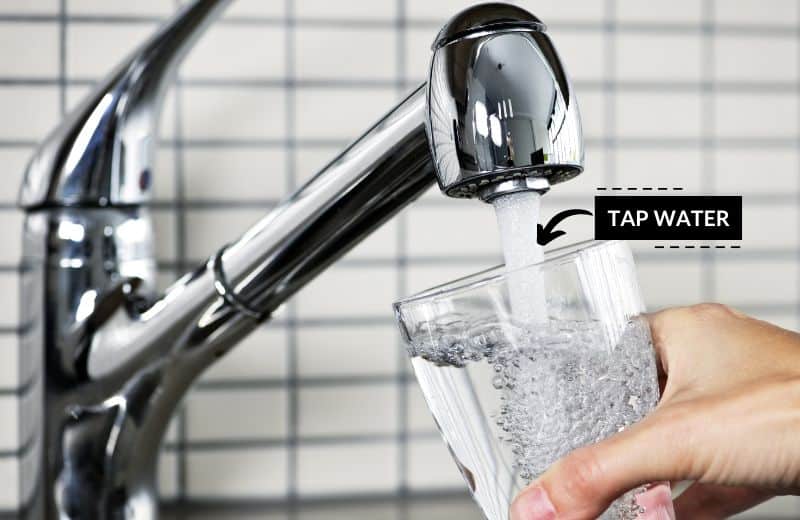
Some Birmingham residents were sent water filters with notes warning about lead in their water supplies in 2022, although according to a PR manager from Birmingham Water Works, these filters were supplied “just in case (customers) felt uneasy” while work was undertaken to replace the City’s remaining lead distribution pipes. You can check out the current and upcoming pipe replacement projects on the Birmingham Water Works Board (BWWB).
👉 Find out more about which 10 states have the worst-quality tap water in our eye-opening guide.
Birmingham SDWA Violations Within 10 Years
| Period of Compliance | Resolved? | Health-Based? | Category Code | Code | Rule Code | Contaminant Code | Rule Group Code | Rule Family Code |
|---|---|---|---|---|---|---|---|---|
| 10/25/16 | Yes | No | Monitoring and Reporting (MR) | Follow-up Or Routine LCR Tap M/R (52) | Lead and Copper Rule (350) | Lead and Copper Rule (5000) | Chemicals (300) | Lead and Copper Rule (350) |
| 04/01/14 - 04/30/14 | Yes | No | Monitoring and Reporting (MR) | Monitoring of Treatment (SWTR-Filter) (36) | Long Term 2 Enhanced Surface Water Treatment Rule (123) | Long Term 2 Enhanced Surface Water Treatment Rule (0800) | Microbials (100) | Surface Water Treatment Rules (120) |
Data Source: EPA ECHO database
🗺️ Where Does the Tap Water in Birmingham Come From?
Birmingham’s tap water comes from the Cahaba and Warrior rivers and the Lake Purdy Reservoir, three raw surface water sources.
Surface water is more at risk of pollution and contamination than groundwater (from underground sources like springs and aquifers). The Cahaba and Warrior rivers are more exposed to the elements, and contaminants may enter the water through surface runoff and air fallout.
Due to this increased risk, BWWB has implemented schemes to reduce the potential for surface water contamination. One such scheme is the Watershed Protection Policy, which limits development in areas of land where drinking water sources are located. The Board has also purchased land in these areas to further reduce the risk of pollution and maintain high-quality raw water, reducing treatment efforts at water utilities.
BWWB collects and tests thousands of water samples per year. This includes testing the raw water on site and conducting tests throughout the water service area. Testing indicates the presence of contaminants of concern and enables BWWB to continue to deliver water at an acceptable and legal standard of quality to its customers.
After water has been taken from the source, it is delivered to one of four treatment plants in the City:
- The Western Filter Plant
- The Putnam Filter Plant
- The Shades Mountain Filter Plant
- The Carson Filter Plant
In each treatment plant, water is disinfected and filtered to control microbial contaminants, remove physical impurities, improve water quality, and ensure that it is safe to drink before being distributed to homes.

The 9-stage water treatment process is as follows:
- Screening – Water is screened to remove plants, logs, large debris, and fish, before being delivered to the water treatment plant.
- Chemical treatment – Chemicals are added to the water.
- Mixing – Chemicals are rapidly mixed into the water to ensure that the entire water supply is evenly treated.
- Coagulation and flocculation – Coagulants are added to the water to encourage impurities and natural organic matter to clump together, forming “flocs”.
- Sedimentation – A sedimentation basin is used to store water, and floc particles settle to the bottom of the tank and are removed from the water.
- Filtration – Numerous gravel and sand filters are employed to remove lingering contaminants in the water.
- Disinfection – The water is treated with chlorine or similar disinfectants to kill bacteria and other microbiological contaminants and prevent recontamination in the water distribution system.
- Storage. Before distribution, water is stored in a clear well or closed tank.
- Distribution. Water is delivered around the City to supply millions of gallons to customers per day.
📉 Who Regulates Birmingham Drinking Water?
The City of Birmingham tap water is managed by the Birmingham Water Works Board and is regulated by the Environmental Protection Agency and the Alabama Department of Environmental Management (ADEM).
The EPA regulates all public water utilities in the country through water testing and quarterly monitoring.
Under the Safe Drinking Water Act, the EPA established the National Primary Drinking Water Regulations, which features a list of regulated tap water contaminants based on research into the health effects of these contaminants.
If Birmingham (or any other City water utility) is found to provide water containing contaminants that exceed the EPA’s guidelines, the City will be enforced by the EPA to remedy the problem – with evidence of the resolution.
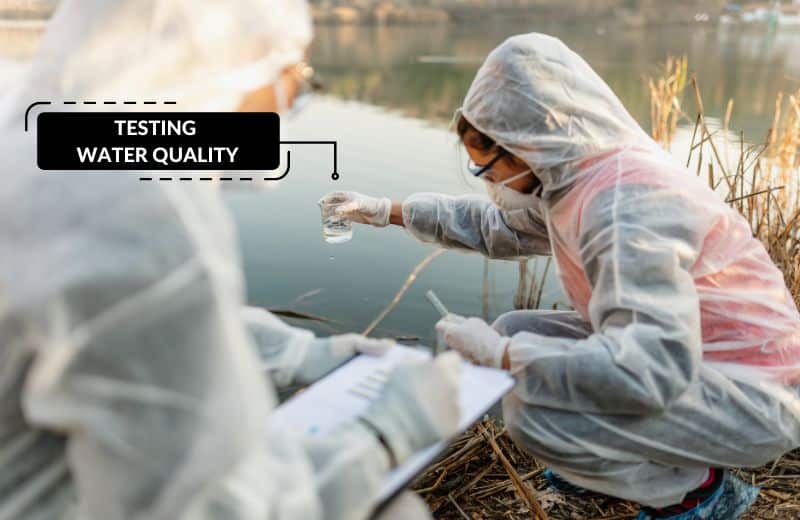
📊 Birmingham Annual Water Quality Report
The most recent Water Quality Report (or Consumer Confidence Report) for Birmingham, Alabama is dated from January to December 2021.
The Report shares findings on the City’s water quality with the public. These findings include the detection of tens of trace contaminants, and we can see from the report that all contaminants were present below the EPA’s Maximum Contaminant Levels, meaning that water in the City is generally safe to drink. However, this doesn’t necessarily mean that the water is 100% clean or healthy.
For example, the Report documents that the highest amount of nitrate detected in Birmingham’s water was 0.36 PPM, and the EPA’s MCL for this drinking water contaminant is 10 PPM. So, while nitrate contamination is nowhere close to the EPA’s maximum allowance, this dangerous chemical is still present in the water.
Some contaminants weren’t detected at all in Birmingham’s drinking water, which is great news (although detection levels are only applicable to the time of testing prior to the Report’s release). These include:
- Arsenic
- Cadmium
- Chromium
- Mercury
- Lead (although this doesn’t account for lead that may enter through water supply lines)
Numerous contaminants were detected in trace amounts lower than the EPA’s maximum allowances, including:
- Barium
- Chlorine
- Fluoride
- Nitrate
- Copper
- Radium
- Numerous disinfection byproducts
More on many of these contaminants later.
Keep in mind that the data in annual Consumer Confidence Reports is only accurate for the specific testing period. The EPA continues to reevaluate its standards and regulations based on emerging evidence on the dangers and health effects of certain contaminants. Some contaminants currently aren’t regulated by the EPA, such as emerging contaminants like PFAS.
We recommend reading through the Consumer Confidence Report for Birmingham, Alabama and familiarizing yourself with the terms and figures included in the Report. You could also compare the Report to previous annual Water Quality Reports (available on the BWWB website) if you want to learn more about how the City’s water quality has changed over time.
| Term | Description |
|---|---|
| Period of Compliance | Time period which a violation took place and resolved. |
| Status | Indication of the most recent compliance status of the violation. Resolved: The system has returned to compliance from the violation Archived: The violation is not yet resolved, but is more than 5 years past its compliance end date. Addressed: The violation is not resolved nor archived, but addressed through formal enforcement. Unaddressed: The violation has not been addressed, resolved, nor archived |
| Health Based | Whether the violation affects health standards. |
| Category Code | Category of violation by which it is reported. TT: Treatment Technique Violation MRDL: Maximum Residual Disinfectant Level Other: Other Violation MCL: Maximum Contaminant Level Violation MR: Monitoring and Reporting MON: Monitoring Violation RPT : Reporting Violation |
| Code | A complete description of violation codes. |
| Contaminant Code | Represents a contaminant for which the municipal water system has incurred a violation against a primary drinking water regulation. |
| Rule Code | The National Drinking Water rule. 110: Total Coliform Rule 121: Surface Water Treatment Rule 122: Long Term 1 Enhanced Surface Water Treatment Rule 123: Long Term 2 Enhanced Surface Water Treatment Rule 130: Filter Backwash Rule 140: Ground Water Rule 210: Stage 1 Disinfectants and Disinfection Byproducts Rule 220: Stage 2 Disinfectants and Disinfection Byproducts Rule 230: Total Trihalomethanes 310: Volatile Organic Chemicals 331: Nitrates 332: Arsenic 333: Inorganic Chemicals 320: Synthetic Organic Chemicals 340: Radionuclides 350: Lead and Copper Rule 410: Public Notice Rule 420: Consumer Confidence Rule 430: Miscellaneous 500: Not Regulated 111: Revised Total Coliform Rule |
| Rule Group Code | Uniquely defines a rule group. 120: Surface Water Treatment Rules 130: Filter Backwash Rule 140: Groundwater Rule 210: Stage 1 Disinfectants and Disinfection Byproducts Rule 220: Stage 2 Disinfectants and Disinfection Byproducts Rule 230: Total Trihalomethanes 310: Volatile Organic Chemicals 320: Synthetic Organic Chemicals 330: Inorganic Chemicals 340: Radionuclides 350: Lead and Copper Rule 400: Other 500: Not Regulated 110: Total Coliform Rules 410: Public Notice Rule 420: Consumer Confidence Rule 430: Miscellaneous |
| Rule Family Code | Defines the rule family code. 100: Microbials 200: Disinfectants and Disinfection Byproducts Rule 300: Chemicals 400: Other 500: Not Regulated |
☣️ Contaminants Found Above Guidelines in Tap Water in Birmingham
There are no contaminants found above EPA legal guidelines in Birmingham drinking water. So, in this section, we’ll be looking at the contaminants that exceed Health Guidelines set by the EWG.
Remember that the EWG doesn’t have any power to enforce water facilities to adhere to its guidelines.
However, if you, like the EWG, believe that the EPA shouldn’t allow even trace levels of certain contaminants in your water, you’ll be interested to learn of the contaminants that the EWG deems to be present in unsafe amounts:
Haloacetic acids (HAA5)† and Haloacetic acids (HAA9)†
Two types of haloacetic acids produced as byproducts of chlorination disinfection are HAA5 and HAA9. In Birmingham’s drinking water, 25.2 PPB (parts per billion) – 26.8 PPB of these contaminants were detected – between 268 and 421x the EWG’s Health Guidelines of 0.1 PPB and 0.06 PPB. The legal limit for HAA5 is 60 PPB, and HAA9 currently has no legal limit.
Total trihalomethanes (TTHMs)†
Another disinfection byproduct affecting Birmingham’s drinking water quality are total trihalomethanes (TTHMs), which are linked to potential health effects including cancer. 37.1 PPB of TTHMs were detected by the EWG, which is 247x the EWG’s recommended Health Guideline of 0.15 PPB. However, the EPA’s legal limit for this impurity is 80 PPB.
Hexavalent Chromium
Hexavalent chromium, or chromium-6, is one of the most dangerous contaminants and toxic chemicals. This carcinogenic contaminant often leaches into surface water supplies due to industrial pollution and can’t be removed with a standard water filter. The EWG’s Health Guideline for chromium-6 is 0.02 PPB, and 0.0778 PPB of this contaminant is found in Birmingham’s drinking tap water – 3.9 x the Health Guideline. The EPA currently doesn’t have a legal limit for this drinking water contaminant.
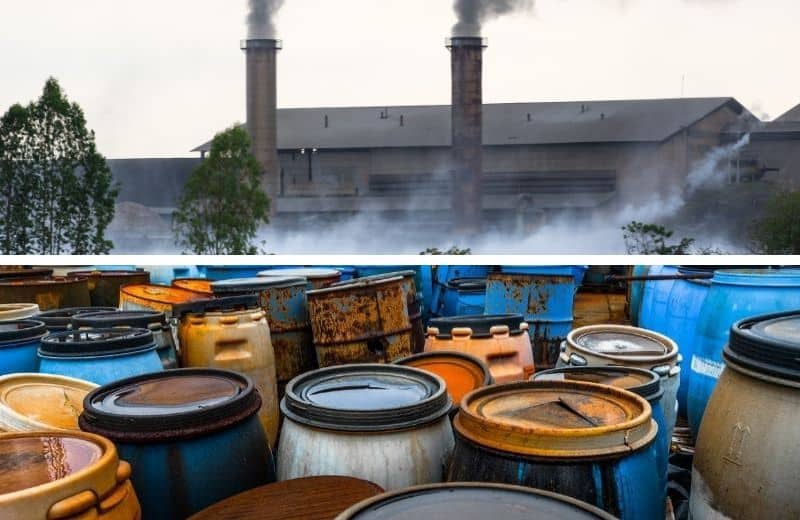
Nitrate and Nitrite
Nitrate and nitrite are forms of nitrogen that enter drinking water sites through fertilizer runoff and leakage from landfills, wastewater, and urban drainage. These contaminants may cause nausea, headaches, and increased heart rate when consumed in large quantities. 0.406 PPM of nitrates and nitrites were detected in Birmingham’s water systems, which is 2.9x the EWG’s Health Guideline of 0.14 PPM. The EPA’s legal limit for these contaminants is 10 PPM.
Radium (-226 & -228)
Several types of radium, -226 & -228, were detected in Birmingham’s tap water. Radium has serious health effects, including cancer, anemia, and depression of the immune system, if long-term exposure occurs. 0.14 pCi/L ((picoCurie per liter) of radium was recorded in Birmingham’s water, which is 2.8x the EWG’s recommended Health Guideline of 0.05 pCi/L. The legal limit for radium in drinking tap water is 5 pCi/L.
Other Disinfection Byproducts
Several other disinfection byproducts, including bromodichloromethane, dibromochloromethane, and chloroform, were also detected above the EWG’s Health Guidelines. Between 0.846 PPB and 15.0 PPB of these impurities were detected in Birmingham’s drinking water – that’s between 8.5 x and 69x the EWG’s Health Guidelines. There is no official legal limit for any of these impurities.
We can see from this list that Birmingham’s biggest water quality issue is disinfection byproducts. This is the case with many water supplies in the US for two reasons:
- Most local authorities disinfect their water with chemicals like chlorine and chloramine, which release disinfection byproducts into water systems.
- Many of these drinking water contaminants aren’t regulated under federal drinking water standards.
Disinfection byproducts are linked to several serious health problems, including cancer, liver damage, and decreased nervous system activity. Thankfully, these impurities can be removed from your drinking water at home with a good water filter.
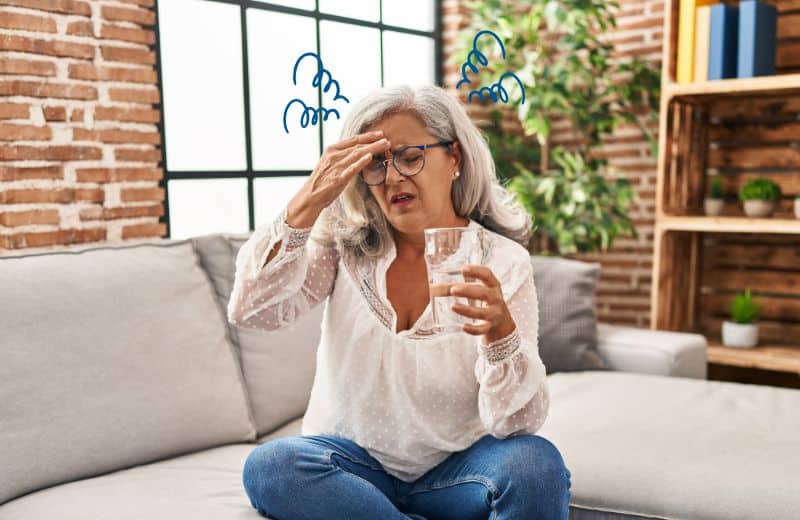
🧫 Main Contaminants Found in Birmingham Tap Water
We’ve looked at the contaminants present in concerning amounts in Birmingham, Alabama drinking water.
Now let’s look at the drinking water contaminants that aren’t considered (by the EPA or EWG) to be dangerously abundant, but are still present in Birmingham’s tap water:
- Aluminum – A heavy metal that often leaches into water from pipes; may have several short-term health effects if consumed in excess, such as vomiting, diarrhea, skin rashes and ulcers, and nausea.
- Barium – A naturally occurring metal that gets into water from certain types of sedimentary and igneous rocks;may cause diarrhea, vomiting, abdominal cramps, blood pressure fluctuations, difficulty breathing, and muscle weakness if consumed in excess.
- Fluoride – A mineral that occurs naturally and is produced artificially and added to water supplies due to its dental health benefits; may cause dental fluorosis (discoloration of the teeth) and skeletal fluorosis (a metabolic bone disease) if large amounts are consumed.
- Manganese – A mineral that contributes to water hardness; has no known health effects but may result in heavy mineral deposits/scale formation in plumbing and appliances if present in high quantities.
- Strontium – A silvery heavy metal that occurs naturally in minerals like calcium carbonate; high-level exposure may cause cancer but no harmful effects are experienced if present in low levels.
- Vanadium – A naturally occurring impurity that’s found in numerous fossil fuel deposits and minerals; not harmful when found in levels naturally present in water.
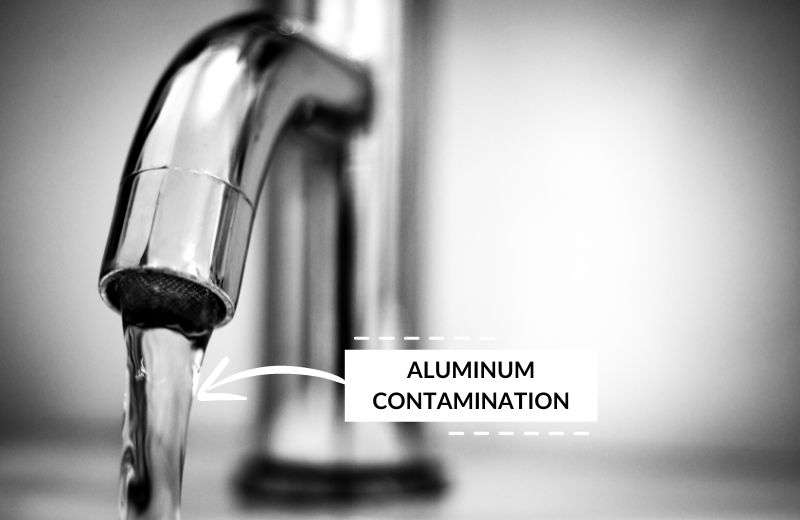
⛲ Birmingham Drinking Water in Public Places
Now we know the ins and outs of Birmingham’s drinking water quality – but what about the water supplied to public places, like bars, restaurants, drinking water fountains, and hotels?
All hotels in Birmingham should supply drinking water that’s clean and safe to their rooms. This water should be exactly the same water that’s delivered to your faucets at home. If you’re not sure whether or not the water in your room is safe for drinking, check at reception. The hotel bar should be able to provide you with clean drinking water if not.
You can also drink tap water supplied at restaurants. It’s a legal requirement for restaurants to provide free tap water on request, and some restaurants may provide filtered tap water for free.
If you prefer not to drink the public water supply in Birmingham, you can buy popular bottled water brands, like Aquafina, Dasani, Smartwater, and La Croix, in grocery and convenience stores in the City. You should find a few novelty bottled water options, too, like flavored water (including strawberry lemon infused water) and sparkling bottled water.
💬 Frequently Asked Questions
Can you drink the tap water in Birmingham?
Yes, you can drink the tap water in Birmingham. Water supplied by Birmingham Water Works is safe and compliant with EPA guidelines. However, there are some concerns about lead in Birmingham’s water, and according to the Environmental Working Group (an independent organization that thinks the EPA’s standards aren’t strict enough), contaminants including disinfection byproducts, radium, nitrate, and nitrate are found in dangerous levels in Birmingham tap water.
Can you drink bathroom tap water Birmingham?
You should be able to drink bathroom tap water in Birmingham – but if you have old pipes, test your water to check. Some old pipes and bathroom fixtures are made from lead and other heavy metals, so water flowing out of a bathroom faucet could be dangerous to drink. If you’re in a hotel, check with the reception if you’re unsure whether or not your bathroom water is safe to drink.
Is Birmingham tap water the best?
Birmingham tap water isn’t the best, but it’s certainly better than other Cities and states. Birmingham’s water hasn’t violated any EPA standards since 2014. Alabama’s water on the whole doesn’t compete with states with the best water, nor is it classed as some of the worst drinking water in the US.
Does Birmingham AL fluoridate its water?
Yes, Alabama is one of the states that fluoridate their water, and Birmingham’s tap water is fluoridated. Fluoride is added to some public drinking water supplies because it’s good for dental health and prevents tooth decay, but some folks choose to filter it out of their water due to emerging evidence of the potential health concerns of fluoride.
Does Birmingham AL have hard water?
Yes, Birmingham, AL typically has hard water. Water in Alabama ranges from soft to very hard, but Birmingham’s tap water is generally moderately to very hard, depending on the exact water source. Signs of hard water include limescale deposits around your faucets and fixtures, reduced efficiency of water using appliances, poor lather with soap, and dry, itchy skin and hair.
Why does Birmingham water taste different?
If you’re not used to the taste of Birmingham’s tap water, it’s probably simply because the water in your own city or state comes from a different source or is treated with different methods. Birmingham drinking water is chlorinated, which may give the water a chemical taste, and the city fluoridates its water, which may contribute to its mineral taste.
How clean is Birmingham water?
Birmingham water is considered clean by EPA standards. Chlorine is used for disinfecting tap water in the City to prevent diseases caused by bacteria and other microorganisms, and the contaminants detected in the City’s water supply are below the EPA’s Maximum Contaminant Levels. However, there are still trace contaminants found in Birmingham water, including nitrates and chlorine byproducts.
